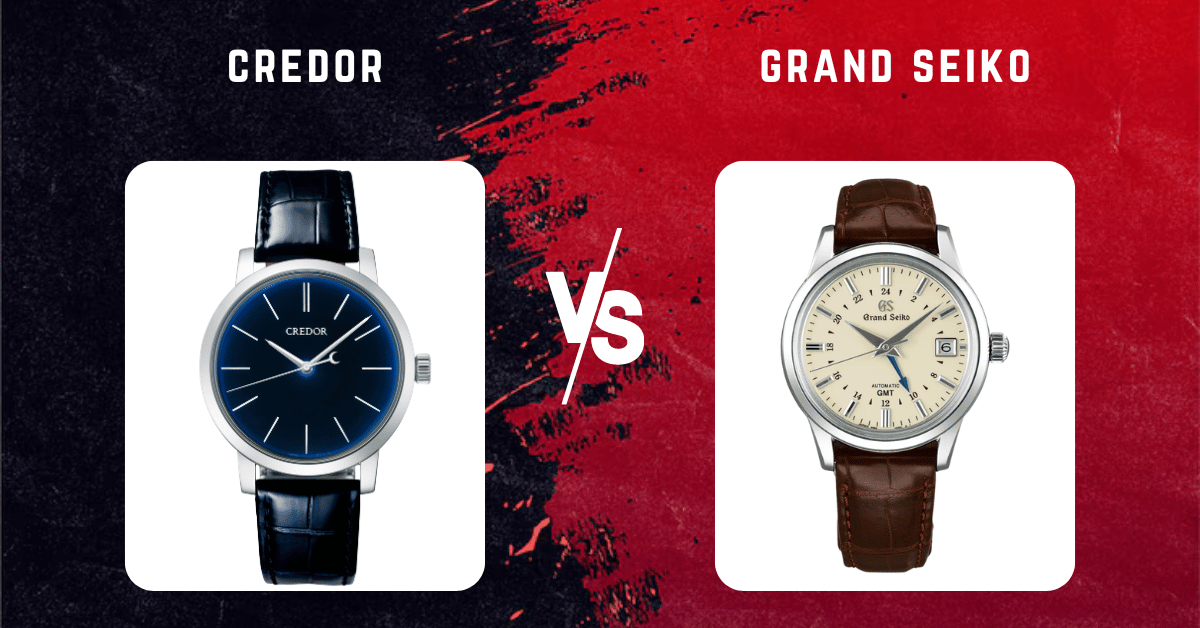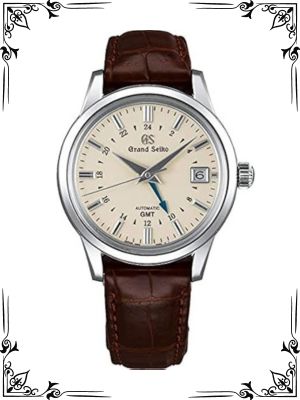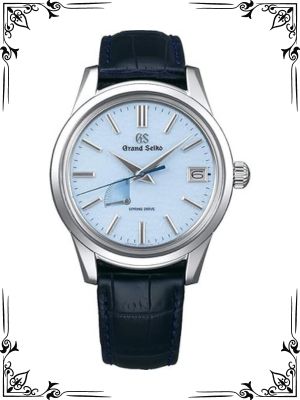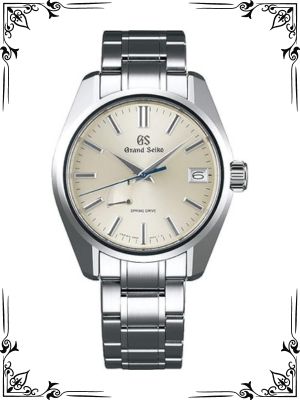For discerning watch enthusiasts seeking the pinnacle of Japanese watchmaking, two names rise above the rest: Credor and Grand Seiko. Both hailing from Seiko Holdings, these prestigious brands represent the absolute peak of Japanese craftsmanship, innovation, and meticulous attention to detail.
But with such esteemed reputations, differentiating between Credor and Grand Seiko can feel like navigating a labyrinth of intricate details.
Fear not, fellow timepiece aficionados! This comprehensive guide will dissect the key distinctions between these powerhouses, empowering you to make an informed decision and select the perfect expression of Japanese watchmaking artistry to grace your wrist.
Brand Heritage
Credor (Established 1974): Born from Seiko’s desire to create the finest watches in the world, Credor emerged as a separate entity within the Seiko group. The name “Credor” translates to “credo” or “belief” in Portuguese, symbolizing the brand’s unwavering commitment to exceptional craftsmanship and artistry.
Credor timepieces are meticulously hand-assembled by master watchmakers in a dedicated atelier in Shiojiri, Japan, utilizing the finest materials and traditional techniques.
Grand Seiko (Established 1960): Grand Seiko’s story began as a quest within Seiko to create a watch that could rival the best Swiss timepieces in terms of accuracy, durability, and aesthetics. The brand achieved this ambition with the release of the 44GS in 1964, showcasing superior precision and a distinct design language.
Today, Grand Seiko continues to push the boundaries of watchmaking, celebrated for its innovative movements, high-precision standards, and distinctive “Grammar of Design” aesthetic philosophy.
Movements
The movement, or the mechanism that fuels the watch, plays a crucial role in its functionality and value. Both Credor and Grand Seiko offer exceptional movements:
| Movement Type | Description | Credor | Grand Seiko |
|---|---|---|---|
| Spring Drive (Exclusive to Seiko) | Seiko’s innovative hybrid movement combines a quartz crystal for regulation with a mainspring for power, offering exceptional accuracy, a smooth sweeping seconds hand, and a long power reserve. | Featured in most Credor models. | Featured in a wide range of Grand Seiko models. |
| Hi-Beat Automatic | High-frequency automatic movements (typically 36,000 vph or 10 beats per second) known for their superior accuracy and smoother running seconds hand compared to standard automatics. | Offered in some Credor models. | Featured in a growing range of Grand Seiko models. |
| 9F Quartz | Seiko’s high-precision quartz movement renowned for its exceptional accuracy and reliability. | Offered in a limited number of Credor models. | A mainstay in core Grand Seiko collections. |
| Mechanical (Hand-wound) | Requires manual winding to keep the watch running. Offers a traditional watchmaking experience for enthusiasts. | Featured in some Credor collections, often boasting high-end complications. | Offered in some Grand Seiko models, particularly high-end limited editions. |
Material
The materials used in a Credor or Grand Seiko watch significantly impact its aesthetics, durability, and value. Here’s a breakdown of the materials commonly employed by these esteemed brands:
| Material | Description | Credor | Grand Seiko |
|---|---|---|---|
| Precious Metals | Primarily 18k gold (yellow, rose, white) for a luxurious feel and timeless elegance. | The predominant material used in Credor cases. | Offered in a wider range of Grand Seiko models, but not as prevalent as in Credor. |
| Platinum | A rare and highly sought-after metal known for its exceptional durability and weight. | Featured in some high-end Credor models. | Offered in some limited edition Grand Seiko models. |
| High-Grade Stainless Steel | Used for its affordability, durability, and hypoallergenic properties. | Offered in some Credor models, often for specific collections. | A common material in core Grand Seiko collections. |
| Sapphire Crystal | The most scratch-resistant watch crystal material. | Standard on all Credor and Grand Seiko models. |
Aesthetics
Credor and Grand Seiko possess distinct design philosophies, shaping the visual identity of their timepieces:
Credor: Credor emphasizes elegance, luxury, and a focus on traditional craftsmanship. Their designs are often understated and refined, showcasing meticulous hand-finishing and precious metal cases. The dials tend to be clean and uncluttered, with a focus on legibility and timeless aesthetics.
Grand Seiko: Grand Seiko adheres to the “Grammar of Design”, a set of principles that emphasize simplicity, legibility, and durability. Their cases feature bold yet balanced proportions, often with a focus on Zaratsu polishing, a meticulous hand-finishing technique that achieves a mirror-like shine. Grand Seiko dials offer a wider variety of textures and colors compared to Credor but still prioritize clarity and functionality.
Signature Models
While both brands offer diverse collections, here’s a glimpse into some of their most celebrated models:
Credor:
Eichi II: A pinnacle of Credor craftsmanship, featuring a hand-wound Spring Drive movement with a 60-hour power reserve and a stunningly finished 18k gold case.
Fugaku: Inspired by Mount Fuji, this dress watch features a hand-wound Spring Drive movement with a platinum case and a mesmerizing blue dial with a textured pattern reminiscent of volcanic rock.
Minute Repeater: A testament to Credor’s mastery of complications, this exquisite timepiece features a hand-wound movement with a minute repeater function.
Grand Seiko:
Spring Drive Snowflake: An iconic model showcasing the beauty of Spring Drive and the “Grammar of Design.” It features a white textured dial resembling pristine snow and a stainless steel case with Zaratsu polishing.
Hi-Beat 36000 Collection: Grand Seiko’s renowned collection of high-frequency automatic movements, offers exceptional accuracy and a smooth sweeping seconds hand.
Kudoke (Nine Watches): A limited-edition series of nine unique watches, each inspired by a specific aspect of Japanese aesthetics and craftsmanship.
Additional Features
While both brands primarily focus on precision timekeeping, some Credor and Grand Seiko models offer additional functionalities:
| Feature | Description | Credor | Grand Seiko |
|---|---|---|---|
| Power Reserve Indicator | Displays the remaining power reserve in an automatic watch. | Often featured in Credor Spring Drive models. | Offered in most Grand Seiko Spring Drive and Hi-Beat automatic models. |
| Date | Displays the date (day of the month). | Offered in some Credor models. | Common across most Grand Seiko models. |
| Day-Date | Displays both the day of the week and the date. | Offered in a limited number of Credor models. | Offered in some Grand Seiko models. |
| Moonphase | Displays the current phase of the moon. | Featured in some high-end Credor models. | Offered in some Grand Seiko complications. |
| Tourbillon | A complex watchmaking complication that counters the effects of gravity on timekeeping accuracy. | Featured in some ultra-high-end Credor models. | Not offered in standard Grand Seiko models (available in some limited editions). |
Price Point
Both Credor and Grand Seiko occupy the luxury watch segment, with significant price differences. Credor, due to its focus on precious metals, hand assembly, and exclusive production numbers, typically commands a higher price point.
Grand Seiko offers a wider range of price points, with some stainless steel models starting around $5,000, while high-end Spring Drive and precious metal models can reach upwards of $20,000.
Brand Perception and Reputation
Credor: Renowned for its unparalleled craftsmanship, exclusivity, and use of precious metals. Some might perceive the brand as catering to a very select audience of watch collectors due to its limited production and high price tags.
Grand Seiko: Widely respected for its exceptional quality, innovative Spring Drive technology, and adherence to the “Grammar of Design”. The brand enjoys a strong reputation among watch enthusiasts for its dedication to Japanese watchmaking excellence, offering a compelling balance of prestige and value compared to some established Swiss luxury brands.
Choosing Your Champion
Selecting between Credor and Grand Seiko boils down to your personal priorities:
Ultimate Luxury: If you prioritize the pinnacle of Japanese watchmaking craftsmanship, precious metals, and an exclusive ownership experience, Credor might be the ideal choice.
Balance of Value and Prestige: If you seek a high-quality, innovative timepiece with a distinctly Japanese aesthetic at a more accessible price point, Grand Seiko offers compelling options.
Movement Preference: If the smooth sweeping seconds hand and superior accuracy of Spring Drive are priorities, both brands offer Spring Drive models, but Credor emphasizes this movement in most offerings. For those who appreciate the traditional feel of a high-frequency automatic, Grand Seiko boasts a wider selection of Hi-Beat models.
Aesthetics: Consider the design language that resonates most with you. Credor emphasizes understated elegance and traditional finishing techniques, while Grand Seiko embraces a bolder “Grammar of Design” philosophy with a focus on functionality and legibility.
Exploring Alternatives
The world of luxury watches extends far beyond these two Japanese powerhouses. If you’re still seeking the perfect timepiece, here are some compelling alternatives to consider:
Lange & Söhne: A German brand renowned for its exquisite craftsmanship, innovative complications, and signature “outsized date” window.
Patek Philippe: A pinnacle of Swiss watchmaking, revered for its heritage, artistry, and timeless designs. (Considerably higher price point compared to Credor and Grand Seiko)
Cartier: A French luxury brand known for its elegant dress watches and iconic jewelry-inspired designs.
FAQs
Is Credor better quality than Grand Seiko?
Both brands prioritize exceptional quality. Credor offers a slight edge in terms of hand-finishing and material selection, especially with its focus on precious metals. However, Grand Seiko excels in innovation with Spring Drive and maintains rigorous quality standards across its collections. Ultimately, “better” depends on the specific model and your priorities.
Which brand is more exclusive?
Credor, with its limited production numbers, focus on hand assembly, and high price point holds the edge in exclusivity.
Is Credor a good investment watch?
High-end Credor models, especially those with precious metals and limited production numbers, can hold significant investment value. However, the primary focus should be on acquiring a timepiece you cherish, not solely on potential investment returns.
Is Grand Seiko considered a luxury brand?
Yes, Grand Seiko occupies the luxury watch segment, offering exceptional quality, innovative technology, and a distinctly Japanese aesthetic at a price point accessible to a wider audience compared to some established Swiss luxury brands.
Should I prioritize brand heritage or innovation?
The decision comes down to personal preference. If heritage and established prestige are paramount, Grand Seiko offers a compelling balance of history and modern innovation. However, if cutting-edge technology like Spring Drive and the exclusivity of a newer luxury brand hold more weight, Credor might be the champion for you.
Conclusion
Credor and Grand Seiko are both titans of Japanese watchmaking but cater to distinct preferences within the luxury watch market. By delving into the brand identities, movement options, materials used, design philosophies, price points, and brand reputation, you’re well-equipped to navigate the decision-making process.
Remember, the “best” watch is subjective and depends on your individual taste and priorities. Utilize this comprehensive guide as a roadmap to explore both brands, identify the features that resonate most with you, and ultimately select the perfect timepiece to become a treasured symbol of luxury and exceptional Japanese craftsmanship on your wrist.




